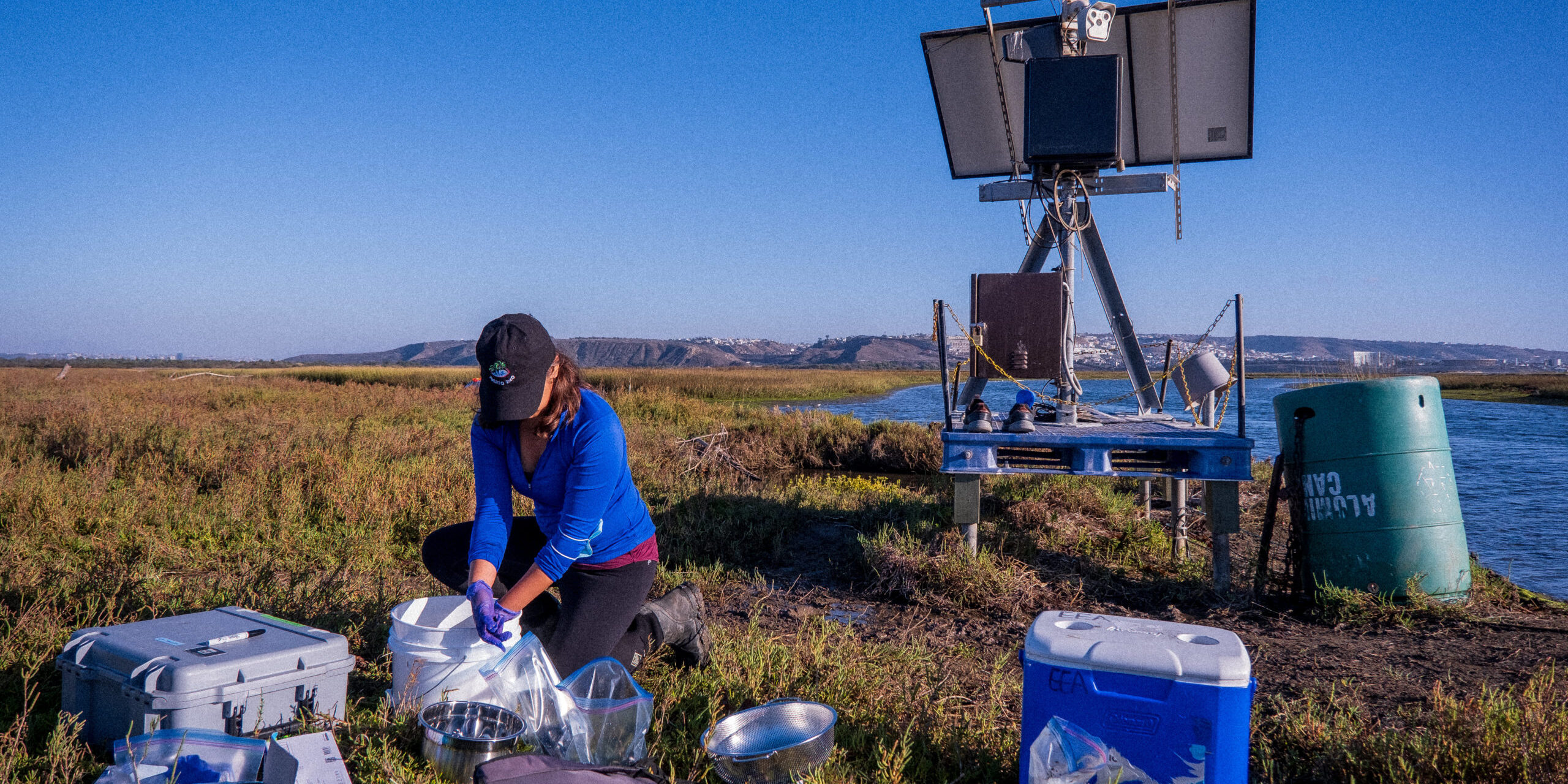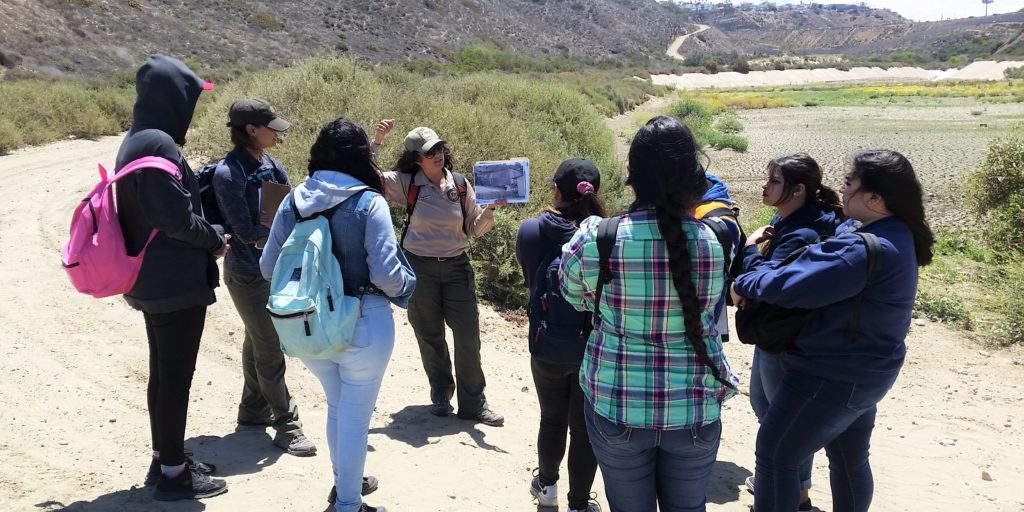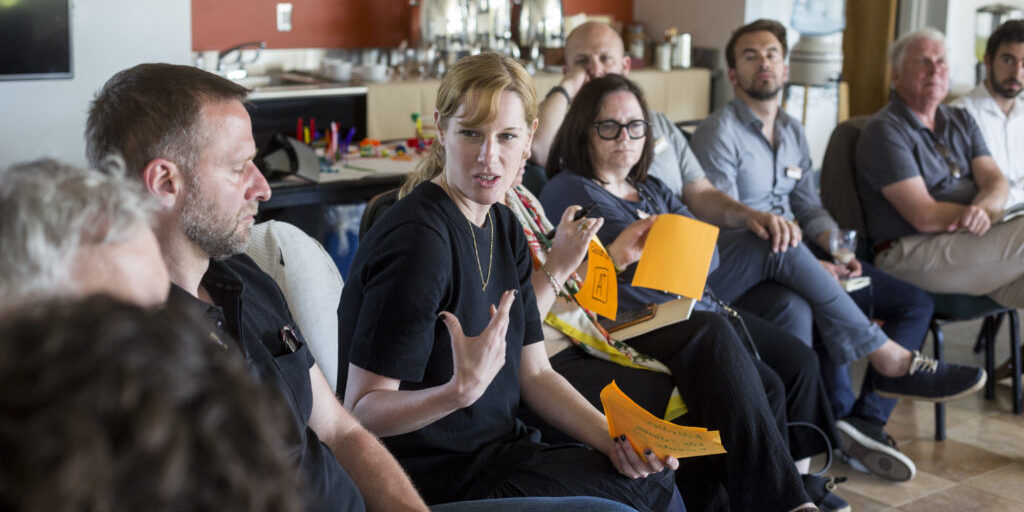Protecting and preserving our urban estuary
TRNERR is one of 30 Reserves in the U.S., yet is unique in the national system due to its location. It is an urban estuary, and one of the largest and last intact in southern California. To protect this resource and support the coastal communities that surround it, our work is grounded in partnership and collaboration, and guided by approaches such as science-to-management, climate resilience, transcending borders, and diversity, inclusion, and access. We animate these approaches through (and across) our core programs: Research, Education, Stewardship, and Coastal Training. For more information, see our management plan.
Mission
Connect people in conserving natural ecosystems in Southern California and Northern Baja California through access, research, stewardship, restoration, education, and science-based decision-making.
Vision
Healthy coasts, estuaries, and watersheds where human and natural communities flourish.
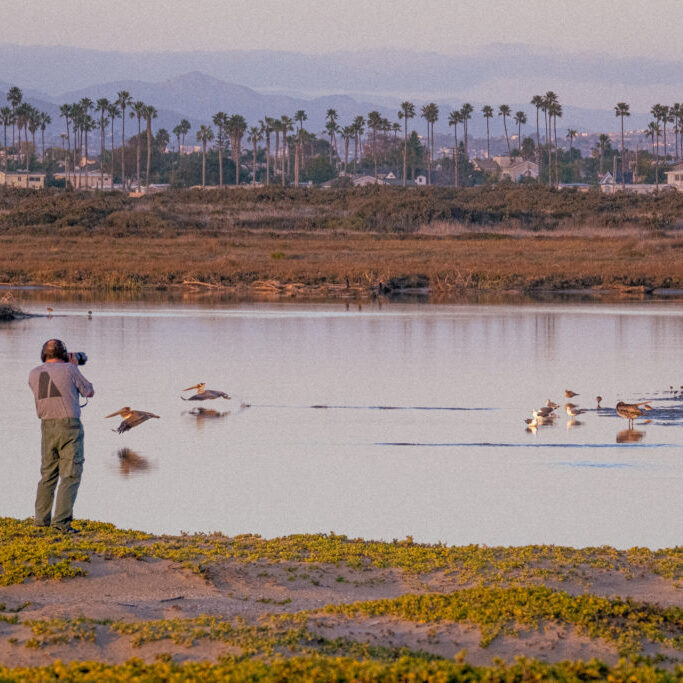
Core programs
The work at the Tijuana River NERR is supported by our four core programs: Research, Education, Coastal Training, and Stewardship.
The Tijuana Estuary is an ideal “living laboratory.” With a focus on tracking short-term variability and long-term change of local estuaries through monitoring, the data collected by at the Reserve provides a foundation for a variety of research projects carried out by universities, agencies, and Reserve staff.
The Reserve provides exciting, hands-on education programs for students; curriculum trainings for educators; tours, informative lectures and other outreach opportunities for adult audiences; and digital learning resources for all visitors to enjoy.
The TRNERR Coastal Training Program focuses on spanning boundaries to generate social ecological solutions to pressing challenges in Southern and Baja California. Through our program, we have connected with thousands of coastal decision-makers resulting in capacity building, increased knowledge, and measurable impact within our community.
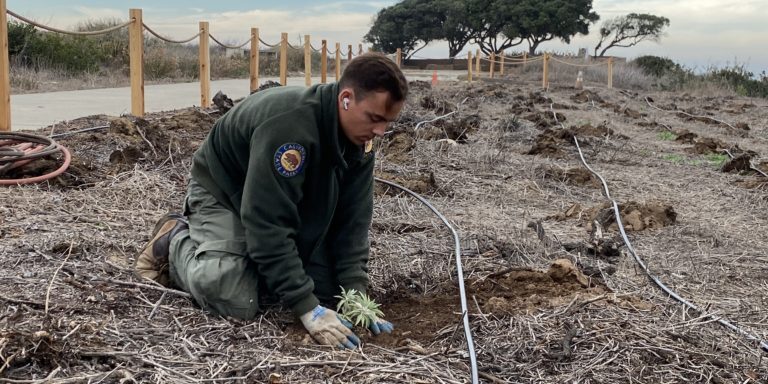
Stewardship at the Tijuana Estuary includes a variety of efforts that strive to conserve biological diversity, protect valued natural and cultural resources, and create opportunities for high-quality outdoor recreation and environmental education.
Projects & Initiatives
In addition to the day-to-day operations that take place at the Tijuana River National Estuarine Research Reserve, we have a number of long-term efforts that are broad in scope and span across the Research, Education, Coastal Training, and Stewardship programs. Reserve staff are fortunate to have the opportunity to work with a variety of partners on these projects and initiatives, examples of which are provided below.
The ResiDUOS Project is a 5-pillar approach aimed at improving social-ecological resilience through marine debris prevention and removal in the U.S.-Mexico border region.
The FloodRISE project researches the potential for metric resolution flood hazard simulations to enhance flood risk management, helping communities become less vulnerable to flooding disasters.
The Habitat Heartbeats project is developing a monitoring system to integrate living organisms such as oysters and mussels with existing monitoring efforts.
This project was co-developed with community members on the front lines of climate change in order to build capacity, transfer knowledge, and build equitable climate resilience through nature-based solutions.
Our goals
- People are aware of, appreciate, and are inspired to advocate for their natural environments and act as stewards in their communities.
- Conserve, manage, restore coastal ecosystems and preserve cultural resources in the Tijuana River Valley.
- Provide public use opportunities that are compatible with conserving our natural resources, and engage visitors in our region’s environment, culture, and history.
- Reserve research increases understanding of coastal ecosystems, environmental change, and social-ecological systems to support science-based management, education, and decision-making.
- Communities better understand the effects of climate change, and have the knowledge and tools needed to successfully adapt to local environmental change.
- Reserve initiatives emphasize the socio-ecological connections across our international border and exemplify binational environmental leadership.
- Reserve’s work is effectively communicated to inspire diverse audiences and build strong partnerships.
- The Reserve is a just, equitable, diverse, and inclusive workplace and program provider.

